Tank beer – “tankova” – may be a hot new trend in London, with Meantime in Greenwich and Pilsner Urquell delivering fresh unpasteurised beer to pubs in beautiful shiny big containers, but the idea of putting beer in cellar tanks to deliver better quality is, even in London, more than a century old.
The first “tank” beer system in the capital appears to have been introduced by Hugh Abbot, a brewer at Watney’s original Stag brewery in Pimlico, London, just around the corner from Buckingham Palace. In 1913 he had three standing butts fixed up in the cellar of a Watney’s pub, and beer delivered in an old horse-drawn tank wagon of the sort that brewers used to transport beer to their bottling stores. The experiment was successful enough that by 1920 Watney’s had electric-powered tanker lorries, fitted with copper tanks, taking beer around to its pubs. It was still using electric vehicles in 1949, though by then tank deliveries to pubs were done using trailers mounted behind standard tractor units.
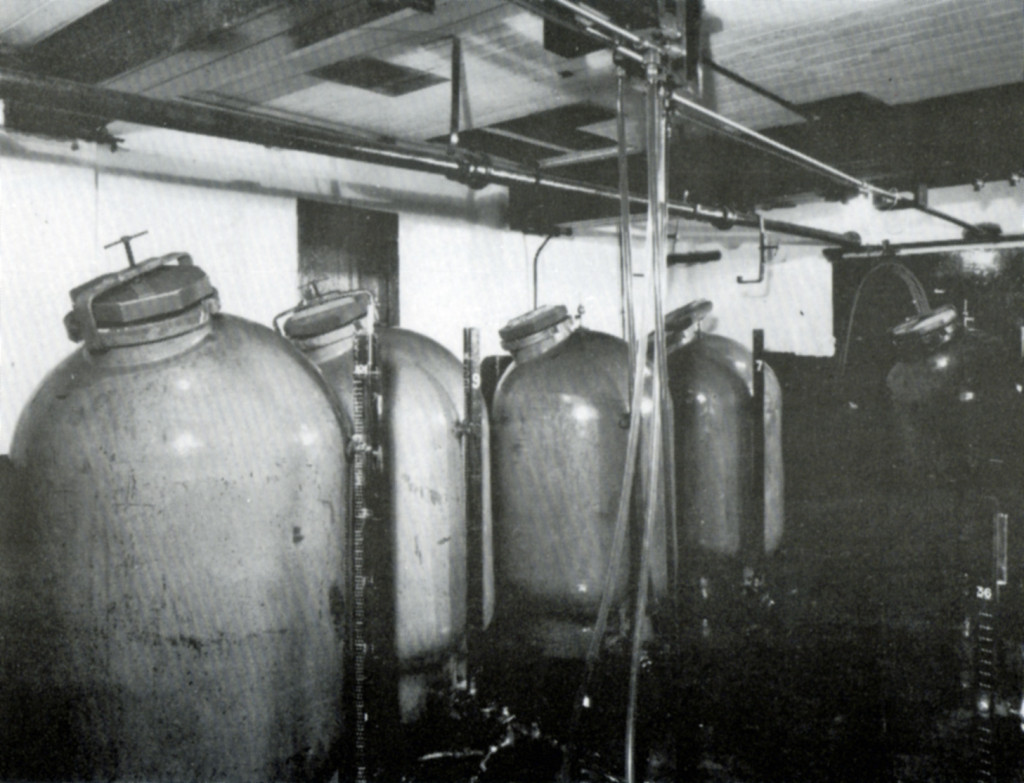
Another of London’s “big seven” 20th century brewers, Charrington’s, of the Anchor brewery in Mile End, was also delivering tank beer by the early 1920s, and a Charrington’s brewer, Alfred Paul, described the system to the Institute of Brewers in a talk in May 1922. Only “bright” mild beer, chilled and filtered, was delivered by Charrington’s tankers to its pubs, he said, although “experiments are being made with a tank for the bulk delivery of naturally conditioned beer.” The road tanks, made of copper lagged with iron, had a capacity of 24 barrels each, that is, 864 gallons, and the tanks in the pub cellars generally held three barrels each. “On arrival of the delivery tank, or road tank, at the house, the hose, is let down through the cellar-flap or any other available aperture, and the beer allowed to run down into the cellar tank. Should the fall from the street to the cellar be insufficient, a band-pump attached to the foot-board of the chassis could be used.” Charrington’s cellar tanks were generally made of earthenware, Paul said, being upright, cylindrical vessels, with a glazed inside, but ” experiments are now being carried out with aluminium and glass-lined steel.” The tanks, he said, “are carefully examined prior to filling, with a powerful electric torch. The men, who are carefully selected, are definitely instructed not to fill a tank unless, in their opinion, which by constant practice has become expert, the tank is scrupulously clean.”
According to Paul, the savings from using cellar tanks were considerable: each barrel’s worth of trade required three actual wooden barrels, one in the cask-washing shed, one on the road and one in the pub cellar, he declared, so one three-barrel cellar tank, costing £30, was the equivalent of nine wooden barrels. If a brewery went over entirely to cellar tanks, he said, it would eliminate coopers, cask washers, cask racking and the clerks needed to track all the casks as they left and returned
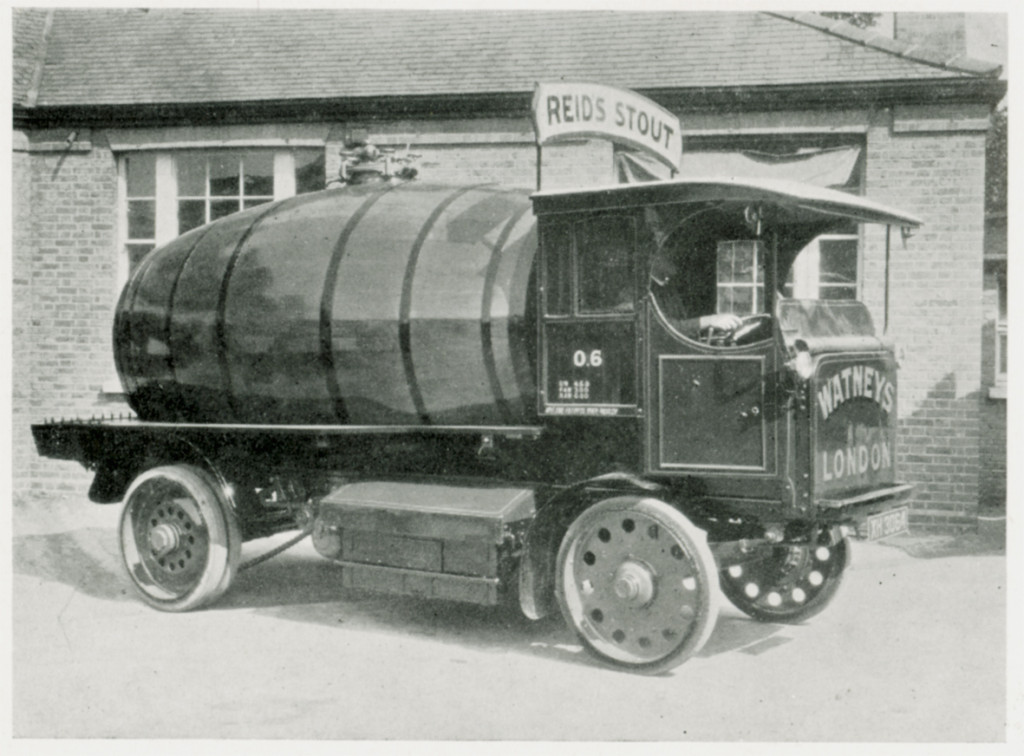
Despite Charrington’s and Watney’s advocacy of tank beer, by 1936 Sydney Nevile, who worked for Whitbread, could only say that while “a substantial number of brewers have adopted for a portion of their trade the principle of delivering filtered beer in tank wagons into tanks in the licensed house,” and “this has met with a considerable amount of success,” still “for one reason or another” the tank beer movement “does not appear at the present time to be making further progress.”
One problem seems to have been that tank beer was most suited to pubs with a quick turnover of large amounts of beer, and London looks to have had a smaller proportion of that kind of outlet than the North of England, which is where tank beer seems to have been most popular. Like Charrington’s, the Hull Brewery in Yorkshire began installing huge glazed earthenware jars in its pubs from the early 1920s. They came in sizes of 108, 54 and 36 gallons (the capacities of the traditional butt, hogshead and barrel), and were made by Royal Doulton.
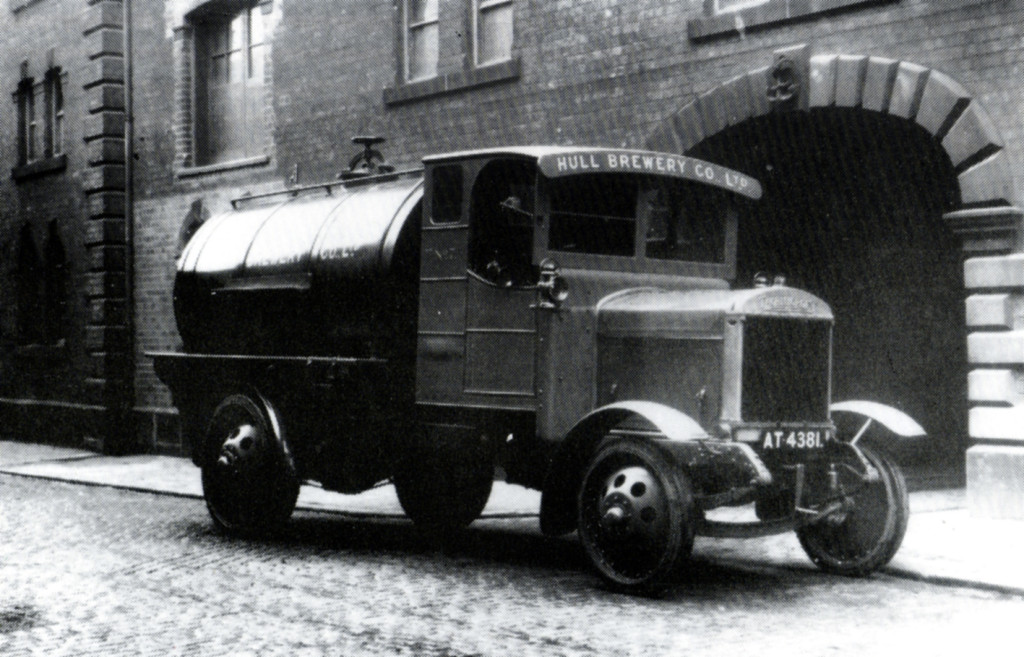
The beer was delivered to the pubs by specially built Thorneycroft tankers, and while the earthenware jars eventually gave way to stainless steel, much of the brewery’s beer was still brought by tanker to many of its pubs, and served up by compressed air from mild steel tanks fitted with disposable plastic liners, through until the brewery closed in 1985.
Other breweries in the North of England, such as Burtonwood, Mansfield in Nottinghamshire and Nimmo’s in Castle Eden, County Durham, also installed cellar tanks in their pubs, many of them 90 or 180-gallon capacity and made in stainless steel by Porter-Lancastrian of Bolton, or the now-closed Grundy’s of Teddington, in West London (which also made aluminium casks and kegs, supplying Truman’s with its first 100 litre/22 gallon kegs in 1971). But tank beer was particularly popular with the “club” breweries, such as the United Clubs Brewery in South Wales, and the Northern Clubs and Federation Brewery (the “Fed”) in Newcastle upon Tyne, set up after the First World War to give working men’s clubs a cheap, reliable source of beer.
At least one of the attractions of tank beer for the club brewers was the speed and convenience with which clubs could be supplied with beer. In 1970 the transport manager at the Federation brewery in Newcastle revealed that “Friday is the busiest day for us, with clubs suddenly realising that they want extra beer to meet the weekend demand.” It was much easier to send out a tanker and pipe the beer into the clubs’ cellars than hump casks or kegs.
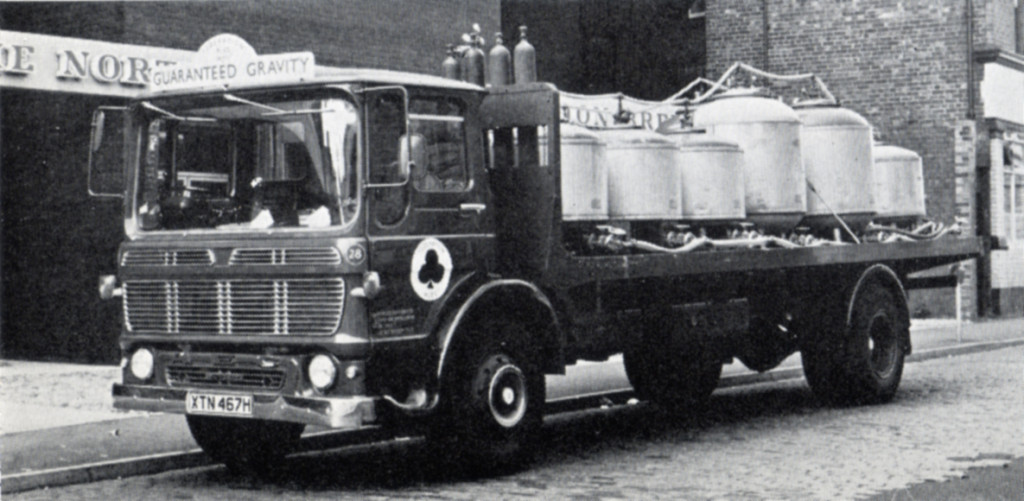
One of the big proponents of tank beer was the Cornbrook Brewery of West Gorton, Manchester, which had most of the larger outlets in its estate of 230 or so pubs fitted with five-barrel refrigerated cellar tanks by the end of the 1950s, all supplied by Porter-Lancastrian. According to Anthony Avis, this was because Cornbrook’s managing director from 1958, David Constable-Maxwell, was “connected” with Porter-Lancastrian. When the Cornbrook Brewery was acquired from its owners, the aristocratic Fitzalan-Howard family, by Eddie Taylor’s fast-expanding United Breweries in 1961, Constable-Maxwell persuaded William Tudor Davies, the managing director of Hammond’s, the largest component in United at that time, that tank beer should be rolled out around United – allegedly without revealing his connection with the manufacturer of the tanks.
Davies was enthusiastic, and a trial was held in Bradford, with all the company’s pubs being converted to tank beer on the same day. Unfortunately, what no one had apparently considered was that the Cornbrook brewery’s beer had been brewed to be delivered through the tank system, while Hammond’s pubs were serving beer brewed at the Tower brewery in Tadcaster which was made to be served from casks. At the same time, Porter-Lancastrian had rushed to complete the contract for the new tanks, and the quality of the equipment they supplied was, in many cases, poor, with the CO2 pressure regulators often not working properly, meaning the beer foamed too much when it was dispensed. After a week, according to Anthony Avis, Hammonds had hardly any pubs serving beer: all that came out of the nozzles in the bars were pints of froth.
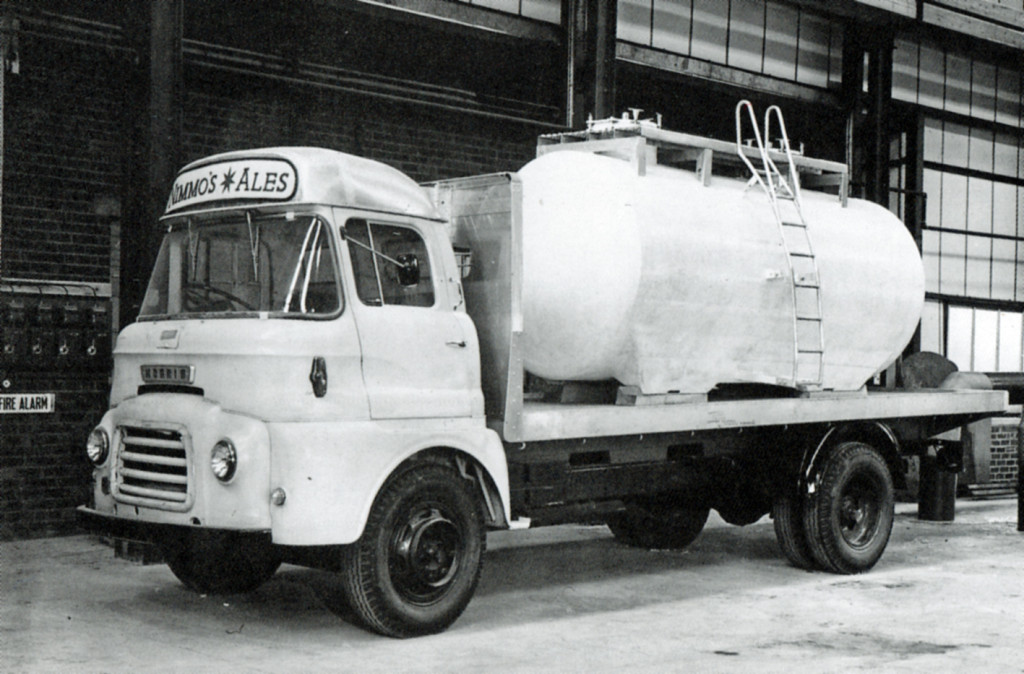
The solution was discovered by the wife of one Hammond’s tenant who had taken her rage out on the new cellar tank by beating it furiously with a broomhandle. When she stopped, the beer suddenly flowed freely, with much less froth. Every ironmongers in Bradford was immediately bought out of broomhandles, and tenants were instructed to belay their cellar tanks regularly during opening hours, to knock the excess gas out of solution and allow the beer to flow.
That was not the last of the problems United had with exporting the Cornbrook cellar tank system to other parts: it was discovered that keeping the tanks clean was beyond most licensees, resulting in cloudy beer. In addition, pubs that might only turn over four barrels a week had two five-barrel tanks in their cellars, which meant stale beer. The plastic linings inside the tanks started reacting with the acid in the beer; and the mild steel the tanks were made of began rusting. The problems cost United Brewers, and its successor companies, Charrington United and Bass Charrington, many thousands of pounds to solve.
While brewers such as Hull (or North Country, as it became in 1974) filtered and carbonated their tank beers, it was perfectly possible to treat the tank like a giant cask, and add finings to the beer once it had been delivered, to allow it to settle and mature naturally. The disadvantage for brewers was that unless they were the “disposable liner” type, as Hammond’s found, the tanks then had to be thoroughly cleaned when empty.
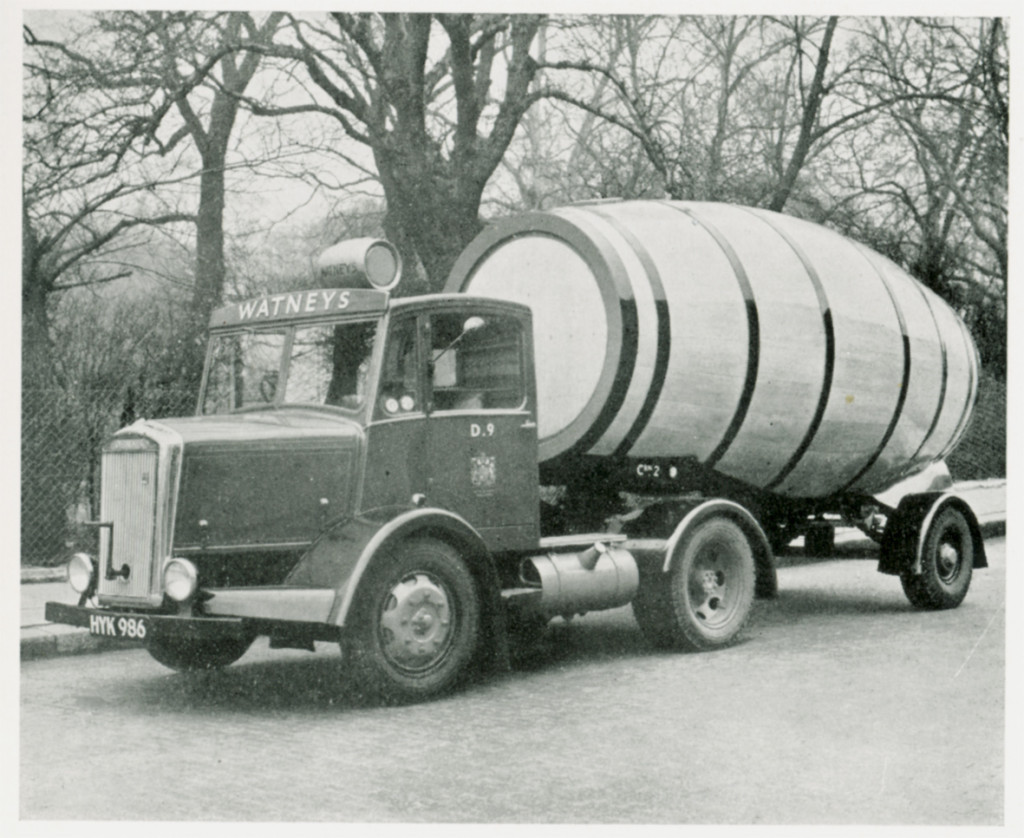
In the early 1970s a brewery such as Mansfield was putting nearly two thirds of its beer into tanks. But by 1994, changes in tastes had cut that to less than 20 per cent, and tanks were coming out of cellars. Ironically, the demise of tank beer in Britain in the 1980s and early 1990s proved a boon to the growing craft beer movement, both here and, especially, in the United States. Redundant pub and club cellar tanks, cheap and easily available, some of them 50 years old, were converted into fermenting vessels and conditioning tanks in their thousands for new small breweries, and “Grundy tank” became the general term in the United States for imported UK-built pub cellar tanks, even though many were not actually built by Grundy.
(An even shorter version of this history appeared in Beer magazine in 2013)

It would be interesting to know when the last “traditional” tank beer was sold in the UK before the current small-scale revival. Greenalls were also big suppliers of tank beer.
A fascinating account, Martyn; especially as I didn’t know that tank beer had such a long history.
I can remember drinking tank beer during the 1970’s in Manchester – Greenall Whitley (not for nothing were they known as “Grotty Greenalls”), and I also drank Mansfield Ales slightly further south. I’m fairly certain the first (1974) CAMRA Good Beer Guide, featured Hull Brewery pubs, even though the beer was bright (filtered).
Some of the systems you describe sound pretty unhygienic, and cleaning these tanks out must have been a nightmare. The modern “tankova” system, whereby a fresh collapsible liner is inserted with each delivery, certainly sounds much more in keeping with modern requirements; and it also prevents the beer from becoming too gassy.
Perhaps if such systems had been around in the 1970’s, tank beer would have had a much better reputation.
A ‘Grundy’ in use today in the U.S. as a reservoir for brewery cleaning solution: https://flic.kr/p/4yCgAY
Marvelous post. I’m still giggling about the broom handles.
The mere mention of Grundy is enough to send long-time North American craft brewers screaming from the room. They required extensive modification to their valves and fittings and were notoriously inconsistent at holding pressure.
the Olde Stone brewpub in Peterborough, Ontario, where I brewed until recently, has a Porter Lancastrian cold liquor tank featuring a large, curved circular side manway held on by substantial brass nuts. It’s a b*****d to dismantle and reassemble. There are also two 3 Barrel Grundys in use as conditioning tanks. The Hardy’s logo is still plainly visible on one of them.
Just to clarify, that’s Hardys and Hanson,
Tank beer was still.being delivered to the Lonsdale, West Jesmond in 2003/2004
The FVs at Sarah Hughes brewery in Sedgley near Dudley are recycled former cellar tanks. There’s a pic here: http://desdemoor.co.uk/back-in-black-living-beer-heritage-in-the-west-midlands/
I have a Royal Doulton Cellar Tank for sale. It is the same tank as the ones you have in a picture above. Are you interested in buying it? I know they are rare. And I live in Adelaide South Australia. Could you please let me know if you are interested and if so what you are prepared to pay for it. It will be insured and crated if your interested. It does need some work on it but in general it is in good shape. Thank you.
Thanks, but no tanks
LOL Martyn I will spend the 1000 dollars to get it up to scratch and make my own ciders. So Tank you !!!!!